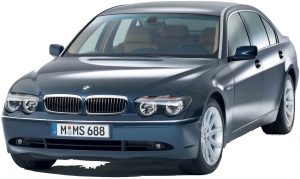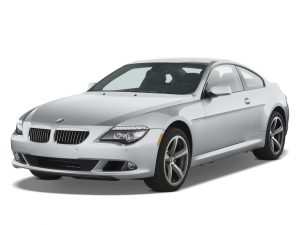
BMW 633CSi-635CSi 1978-1989
INSTANT DOWNLOAD
Complete digital official shop manual contains service, maintenance, and troubleshooting information for the BMW 633CSi/635CSi 1978-1989. Diagnostic and repair procedures are covered in great detail to repair, maintain, rebuild, refurbish or restore your vehicle like a professional mechanic in local service/repair workshop. This cost-effective quality manual is 100% complete and intact as should be without any missing pages. It is the same factory shop manual used by dealers that guaranteed to be fully functional to save your precious time.
This manual for BMW 633CSi/635CSi 1978-1989is divided into different sections. Each section covers a specific component or system and, in addition to the standard service procedures, includes disassembling, inspecting, and assembling instructions. A table of contents is placed at the beginning of each section. Pages are easily found by category, and each page is expandable for great detail. It is in the cross-platform PDF document format so that it works like a charm on all kinds of devices. You do not need to be skilled with a computer to use the manual.
BMW 633CSi 1978-1984
BMW 635CSi 1985-1989
EXCERPT:
3.5L 6-CYL 1989-90 Engine – 3.5L 6-Cylinder
Removal (Manual Transmission)
1. Remove exhaust system and support brackets from vehicle. Disconnect drive shaft at rear of transmission.
Remove heat shield from center support bearing.
2. Remove center support bearing bracket. Lower drive shaft at center support bearing and pull drive shaft from transmission. Remove speed and reference mark sensors.
3. Remove clutch slave cylinder, leaving line connected. Remove speedometer cable and disconnect plug from back-up light switch.
4. Pull up boot from floor shift lever. Remove circlip and pull shift lever up and out. Support transmission and remove crossmember. Remove transmission.
Installation (Manual Transmission)
1. To install, reverse removal procedure. When installing drive shaft, use new lock nuts at rubber coupling.
Only tighten nuts (never bolts) to avoid stress on coupling.
2. When installing drive shaft, push center support bearing forward .08″ (2.0 mm) to preload bracket and tighten nuts.
3. When installing speed and reference mark sensors, note that Black plug of speed sensor faces ring gear.
Gray ring of reference mark sensor faces flywheel. If plugs are reversed, engine will not start.
Removal (Automatic Transmission)
1. Disconnect exhaust system and remove support brackets. Disconnect bracket and accelerator cable from transmission. Drain transmission oil. Remove filler tube and plug opening.
2. Disconnect oil cooler lines from transmission. Label and disconnect all wiring attached to transmission.
Remove cover plate from transmission. Mark installed positions of speed and reference mark sensors.
Remove sensors.
3. Remove 4 bolts securing torque converter to drive plate. Disconnect shift rod from lever. Disconnect drive shaft coupling at rear of transmission.
4. Remove heat shield and center support bearing bracket. Lower drive shaft at center support bearing and pull drive shaft from transmission. Support transmission.
5. Remove crossmember and lower transmission to rest on front axle carrier. Place transmission jack under transmission. Separate and remove transmission and torque converter from engine.
Installation (Automatic Transmission)
1. To install transmission and remaining components, reverse removal procedures. Before installing transmission, ensure torque converter is properly seated.
2. When installing drive shaft, push center support bearing forward .08″ (2.0 mm) to preload bracket.
Tighten nuts.
3. When installing sensors, note that Black plug of speed sensor faces ring gear and Gray ring of reference mark sensor faces flywheel. If plugs are reversed, engine will not start.
ENGINE R & I
NOTE: Vehicle transmission must be removed prior to engine removal.
Removal
1. Remove hood. Disconnect battery cables from battery. Remove transmission. Remove splash guard from under engine. Drain cooling system and remove radiator. Remove power steering pump (leaving hoses connected) and secure away from engine.
2. Remove A/C compressor with hoses connected (If equipped). Secure away from engine. Remove accelerator cable. Remove cruise control cable from engine (if equipped).
3. Label and disconnect all electrical and ignition wiring that might interfere with engine removal.
Disconnect wiring harness in glove box and pull through hole in firewall.
4. Label and disconnect all coolant, ventilation, fuel and vacuum hoses (or lines). Remove air cleaner with airflow sensor.
5. Remove nuts from engine mounts. Ensure no wiring, hoses or lines are attached to engine. Attach lifting chain and hoist to engine. Carefully lift engine from vehicle.
Installation
To install engine, reverse removal procedures. Ensure that all hoses, lines and electrical connections are installed in original positions. Bleed cooling system.
CYLINDER HEAD R & I
Removal
1. Disconnect battery ground cable. Drain cooling system. Remove splash guard from bottom of engine.
Disconnect exhaust pipes from manifolds.
2. Disconnect accelerator and cruise control cables from throttle valve housing, including cable to automatic transmission (if equipped). Disconnect attached hoses and electrical wiring. Remove air cleaner with airflow sensor.
3. Label and disconnect all coolant hoses attached to cylinder head. Label and disconnect all fuel, ventilation and vacuum hoses (or lines) from cylinder head and intake manifold.
4. Label and disconnect all electrical and ignition wiring. If necessary, disconnect electrical plug in glove box, and pull wiring through hole in firewall.
5. Remove valve cover. Set No. 1 piston on TDC of compression stroke. Timing pointer and mark on vibration damper should align. Valves of No. 6 cylinder should overlap.
6. Remove timing chain tensioner plug, spring and piston. Remove camshaft sprocket. Remove cylinder head bolts in reverse of tightening sequence. Install locating pins in bolt holes to keep rocker arm shafts from turning. Remove cylinder head.
Inspection
Cylinder head may be machined if necessary. Minimum height is 5.063″ (128.6 mm). Use a .012″ (.30 mm) thicker head gasket if cylinder head is machined.
…
INSTANT DOWNLOAD




